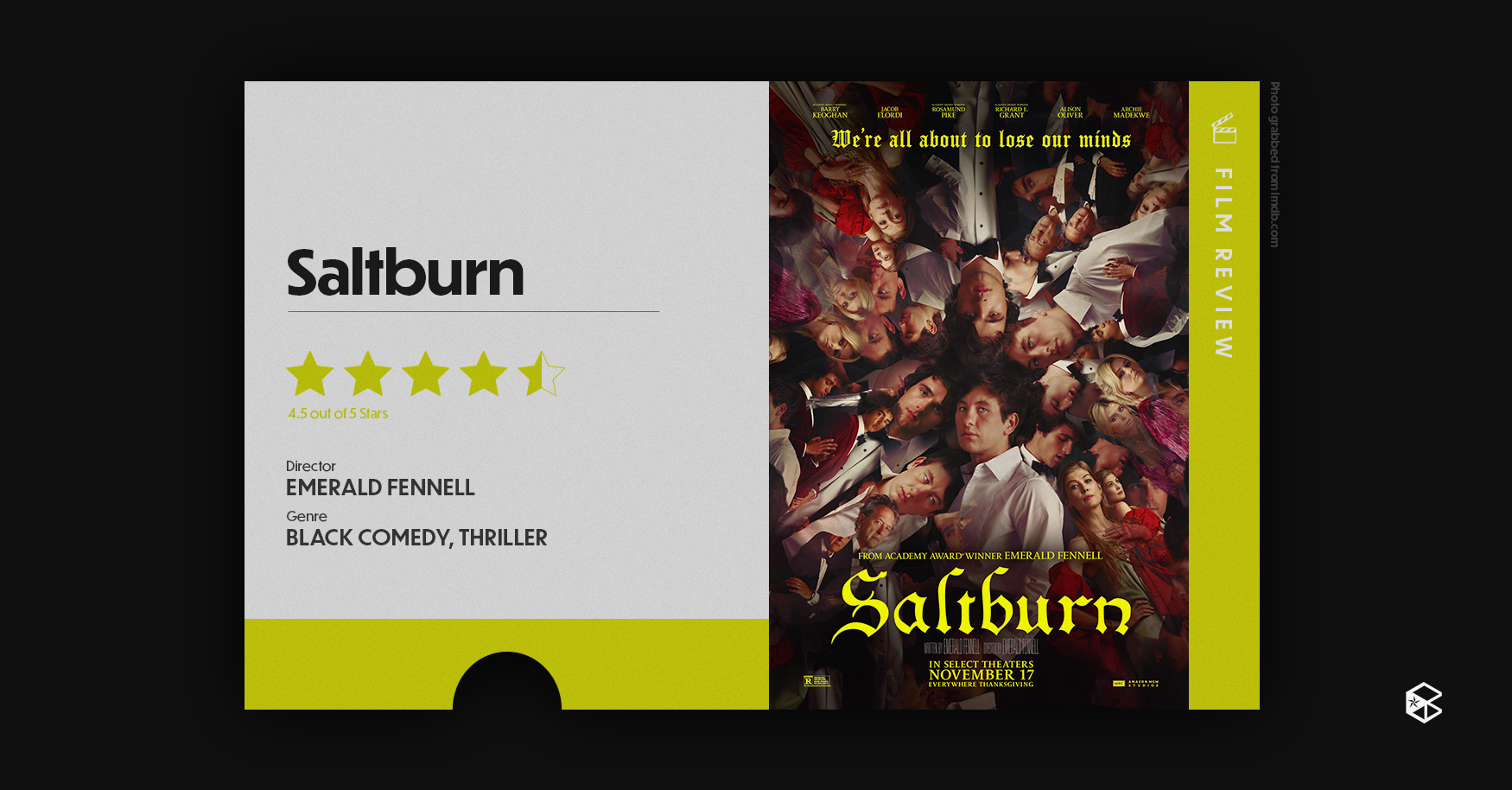Saltburn is only the second movie that Emerald Fennell has directed after her critically acclaimed film, Promising Young Woman. That being said, the film is now looking to bag a few Academy awards after being nominated for Best Picture at the Critics Choice Awards and has surely become a must-watch this year.
“A vampire movie” is what Fennell described Saltburn as, despite having no element of the supernatural. It’s a movie that you’ll appreciate more each time you watch it. As both a director and producer, Fennell mentioned that every single frame is intentional—to the many easter eggs, references; both old and new, and countless subtle foreshadowing—you feel as if you uncover layers upon layers each time you watch.
Transport yourself into the world of Saltburn
From one of the first shots of the film, you’re immersed in the mid-2000s, when the story takes place. Throughout the movie, no costume, set, and even music is out of place. With the opening sequence alone, you are met with a great score composed by Anthony Willis—if there’s one thing people tend to overlook, it’s the music of this film. Kicking off with the opening score where the UK’s national anthem, “God Save the King” transitions to “Oliver Quick!” the music establishes the film’s setting and who the main character is through a drawn-out take of Oliver (Barry Keoghan) walking through the gates of Oxford University.
Moreover, the costume design for each character was also one for the books. Headed by Sophia Canale, details of Felix’s (Jacob Elordi) stacked bracelets and Venetia’s (Alison Oliver) untouched roots—to the midsummer’s night theme of a party—no fabric was untouched nor suit untailored for each character and their personalities.
The stiff upper lip
Audiences of this film could see the conflict between the posh English upper class and the “bland” middle class—although, that isn’t the main focus of the film. Given the background of Fennell, being an alumna of Oxford herself, it wouldn’t give justice, let alone make sense, if the film drove its plot around class conflict. Instead, we get a reflection of the absurdity of high society through satire and drama.
Additionally, Elspeth (Rosamund Pike) and Sir James Catton (Richard E. Grant) give viewers an excellent performance throughout the film. They portray the condescending characters whose snobby interior is shrouded by their need to meddle and pry into the guests they bring to Saltburn. For them, “posh” is an understatement. The satirical nature of this film is also embodied in scenes scattered throughout many exchanges of dialogue highlighting the disparity between the social classes involved.
Saltburn is no stranger to provoke an emotion of secondhand embarrassment by putting in “hard-to-watch” scenes.
Like any other trending film these days, many scenes from the movie leaked into social media. Because of this, most people already had an introduction to the infamous “bathtub scene”—piquing the interests of many moviegoers. Even after the film, most were left in a state of shock from scenes that had a clear purpose to invoke emotions of disgust.
If you crave a movie that fills you with uneasiness, this film would go at the top of your must-watch list. In seemingly simple and unnecessary scenes such as Oliver ordering eggs during breakfast and being met with judgment from the Catton family or during Oliver’s birthday party when everyone was singing him “Happy Birthday” and no one knew his name. There is a mastery of how Saltburn portrays those subtle yet skin-crawling scenes.
A labyrinth of foreshadowing and references
Almost every element in the film references art history or mythology. For instance, the costume designs during a party that occurred in the latter part of the film foreshadow the deaths of certain characters.
In Felix’s midsummer’s night costume alone, there are many possible interpretations when it comes to the literature his costume references. Some theorize that his wings reference Icarus, who in Greek mythology, was a man that flew close to the sun leading to his demise; while others say it’s a reference to Juliet in William Shakespeare’s play, “Romeo and Juliet” and how his death closely resembles hers. Even Venetia’s costume incorporating webs preempts her monologue as to how Oliver became entangled with the Catton family’s lives.
Similarly, if you also pay close enough attention to the set design, one can notice the direct foreshadowing in the film’s plot. However, it should be taken note that some scenes that incorporate this are too “on the nose.” An example is how Oliver’s costume is reminiscent of a minotaur — a statue of which is directly modeled after the body of Keoghan. There are tons of dead giveaways in the film, but the beauty of Saltburn is how they can only give you hints to the twist if you know how to discern them.
As Duncan the Butler (Paul Rhys) said, “Lots of people get lost in Saltburn.” Not only in the story’s setting but also as a movie, this statement stands true. The vast allusions and cinematography in this film don’t get enough appreciation.
Saltburn is a movie that stands firm on its storytelling and isn’t afraid to show it—no matter how shocking or upsetting it is to audiences.
Catch Saltburn on Amazon Prime!


